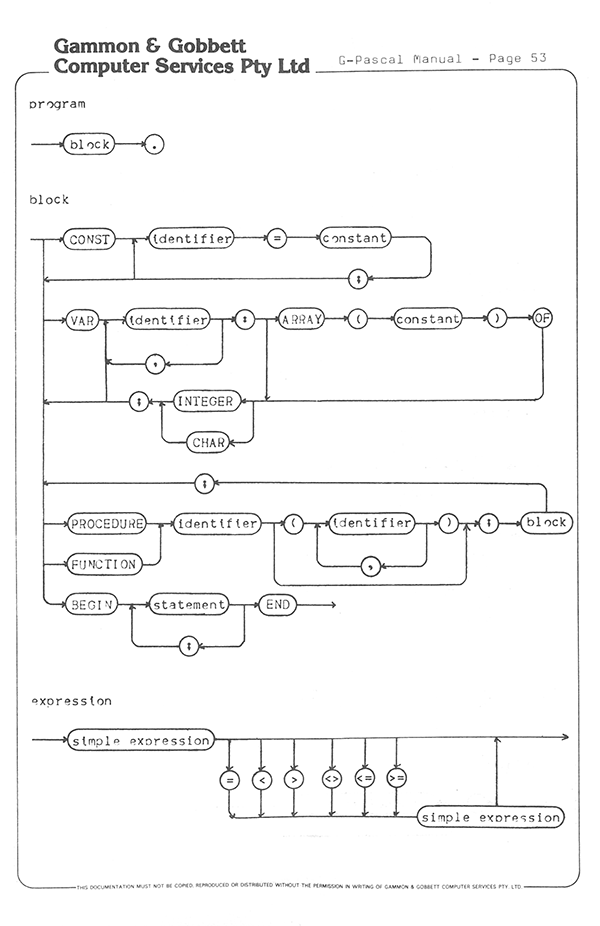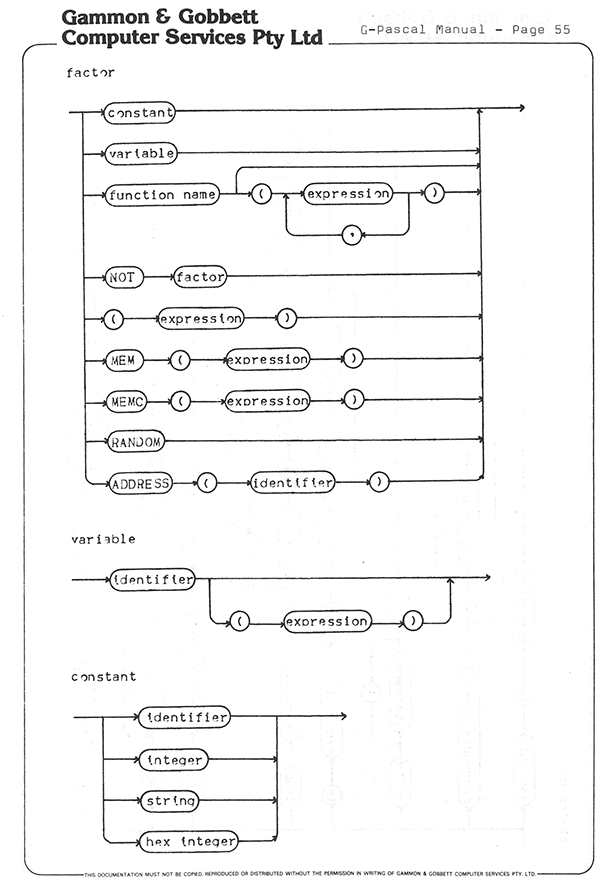Gammon Forum
| GPascal - a blast from the past |
|---|
It is now over 60 days since the last post. This thread is closed.
![]() Refresh page
Refresh page
Pages: 1 2
| Posted by | Nick Gammon
Australia (22,982 posts) |
|||
|---|---|---|---|---|
| Date | Sat 25 Jun 2011 05:22 AM (UTC) Amended on Sat 25 Jun 2011 11:33 PM (UTC) by Nick Gammon |
|||
| Message |
|
| Posted by | Fiendish
USA (2,514 posts) |
|||
|---|---|---|---|---|
| Date | Reply #1 on Sat 25 Jun 2011 06:48 PM (UTC) | |||
| Message |
|
| Posted by | Nick Gammon
Australia (22,982 posts) |
|||
|---|---|---|---|---|
| Date | Reply #2 on Sun 26 Jun 2011 12:30 AM (UTC) Amended on Sun 26 Jun 2011 06:07 AM (UTC) by Nick Gammon |
|||
| Message |
|
| Posted by | Nick Gammon
Australia (22,982 posts) |
|||
|---|---|---|---|---|
| Date | Reply #3 on Sun 17 Jul 2011 03:31 AM (UTC) Amended on Fri 28 Nov 2014 02:01 AM (UTC) by Nick Gammon |
|||
| Message |
|
| Posted by | Nick Gammon
Australia (22,982 posts) |
|||
|---|---|---|---|---|
| Date | Reply #4 on Sun 17 Jul 2011 03:35 AM (UTC) | |||
| Message |
|
| Posted by | Nick Gammon
Australia (22,982 posts) |
|||
|---|---|---|---|---|
| Date | Reply #5 on Sun 17 Jul 2011 04:09 AM (UTC) Amended on Fri 28 Nov 2014 02:02 AM (UTC) by Nick Gammon |
|||
| Message |
|
| Posted by | Nick Gammon
Australia (22,982 posts) |
|||
|---|---|---|---|---|
| Date | Reply #6 on Sun 17 Jul 2011 04:34 AM (UTC) Amended on Sun 17 Jul 2011 04:36 AM (UTC) by Nick Gammon |
|||
| Message |
|
| Posted by | Cjb
Australia (3 posts) |
||
|---|---|---|---|
| Date | Reply #7 on Wed 22 Feb 2012 02:25 PM (UTC) | ||
| Message |
|
| Posted by | Nick Gammon
Australia (22,982 posts) |
|||
|---|---|---|---|---|
| Date | Reply #8 on Wed 22 Feb 2012 07:56 PM (UTC) | |||
| Message |
|
| Posted by | Cjb
Australia (3 posts) |
||
|---|---|---|---|
| Date | Reply #9 on Thu 23 Feb 2012 02:33 AM (UTC) | ||
| Message |
|
| Posted by | Cjb
Australia (3 posts) |
||
|---|---|---|---|
| Date | Reply #10 on Thu 23 Feb 2012 05:40 PM (UTC) | ||
| Message |
|
| Posted by | Nick Gammon
Australia (22,982 posts) |
|||
|---|---|---|---|---|
| Date | Reply #11 on Thu 23 Feb 2012 10:27 PM (UTC) | |||
| Message |
|
| Posted by | Deathshadow
USA (4 posts) |
||
|---|---|---|---|
| Date | Reply #12 on Wed 19 Sep 2012 07:07 AM (UTC) | ||
| Message |
|
| Posted by | Nick Gammon
Australia (22,982 posts) |
|||
|---|---|---|---|---|
| Date | Reply #13 on Wed 19 Sep 2012 09:55 AM (UTC) | |||
| Message |
|
| Posted by | Deathshadow
USA (4 posts) |
||
|---|---|---|---|
| Date | Reply #14 on Sat 22 Sep 2012 05:07 PM (UTC) | ||
| Message |
|
The dates and times for posts above are shown in Universal Co-ordinated Time (UTC).
To show them in your local time you can join the forum, and then set the 'time correction' field in your profile to the number of hours difference between your location and UTC time.
84,593 views.
This is page 1, subject is 2 pages long: 1 2
![]()
It is now over 60 days since the last post. This thread is closed.
![]() Refresh page
Refresh page
Quick links: MUSHclient. MUSHclient help. Forum shortcuts. Posting templates. Lua modules. Lua documentation.
Information and images on this site are licensed under the Creative Commons Attribution 3.0 Australia License unless stated otherwise.









